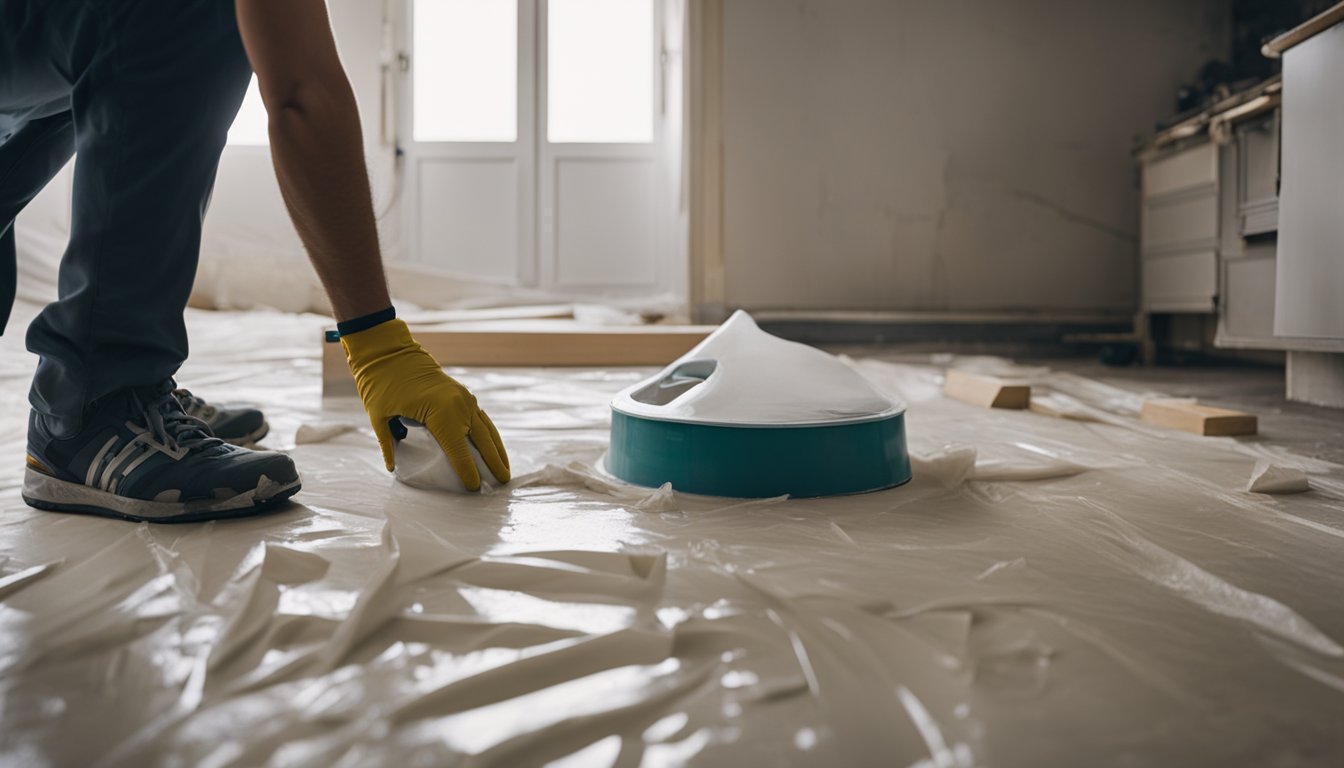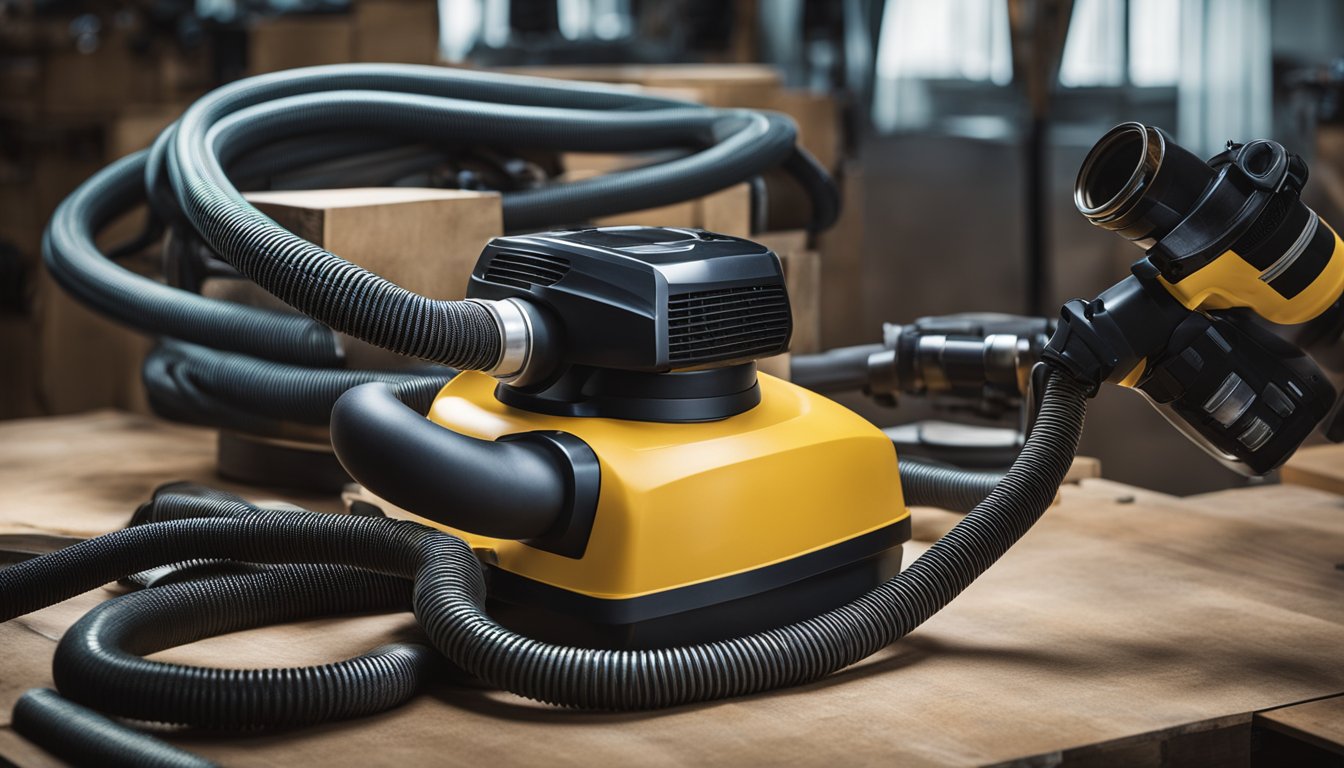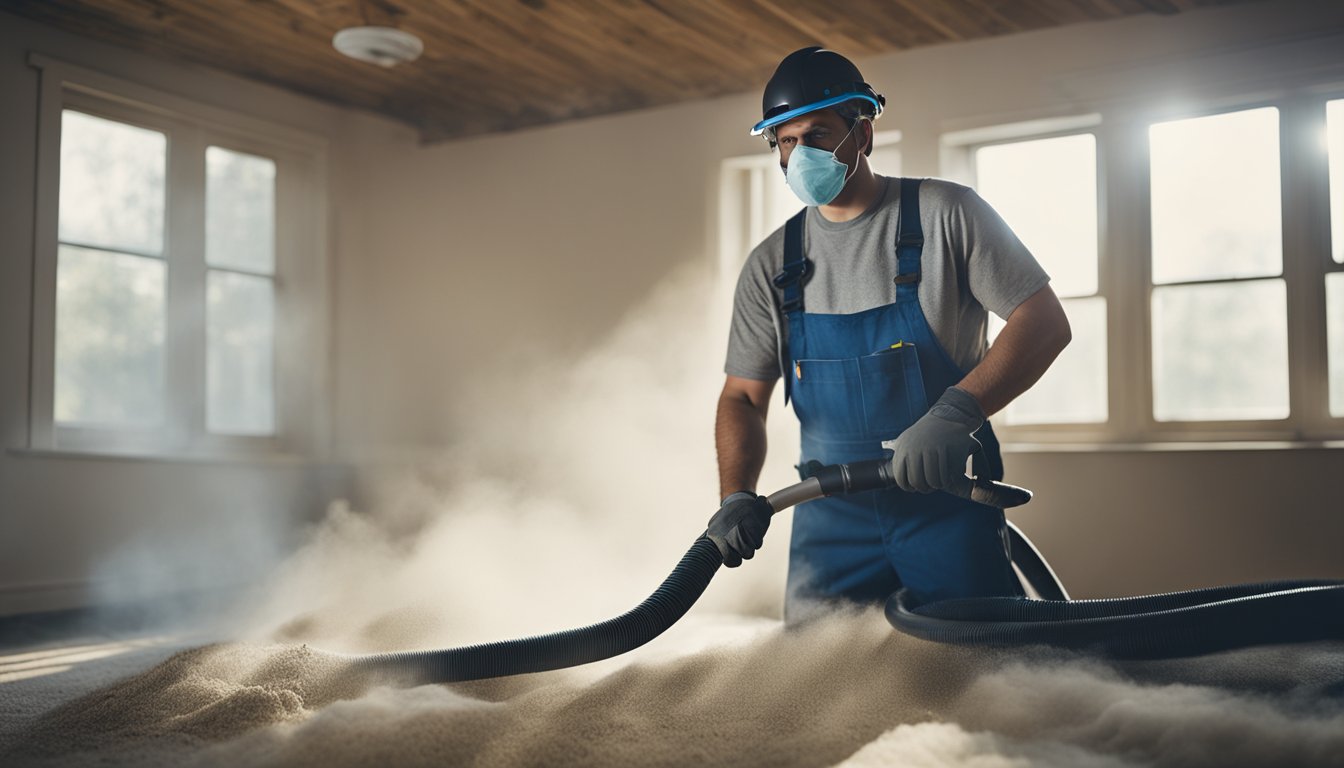Late updated: 30 Jun 2024 11:06
Written by: Daniel Harper
Managing Dust During Home Renovations: Essential Tips for a Cleaner Home
Home renovations can turn your living space into a dream home, but the process often brings an unwelcome guest: dust. This pervasive menace can damage furniture, affect indoor air quality, and pose health risks. Effective dust management during home renovations is essential to protect both your home and health.

During remodels, controlling dust involves more than just keeping things clean. Dust particles can spread rapidly, necessitating strategies to limit their movement. We can manage this with practical steps like sealing off specific areas, covering floors and vents, and using specialised equipment to capture dust. These measures can significantly reduce dust migration and enhance indoor air quality during your project.
Success in managing construction dust hinges on understanding and implementing containment and removal techniques. Our approach combines practical containment strategies, such as plastic sheeting and protective coverings, with the use of advanced vacuums and air scrubbers. These methods not only help us achieve a cleaner work environment but also ensure the safety and comfort of our living space during the renovation.
Key Takeaways
- Dust containment is crucial during a home renovation
- Use specialised equipment for effective dust removal
- Practical strategies can protect your health and home
Establishing Effective Dust Containment
Creating a dust containment strategy is essential during home renovations to protect both the workspace and the rest of the house. Let's explore critical measures to contain dust, such as preparing the work area, securing ventilation, and using dust barriers.
Initial Measures and Preparing the Work Area
Our first step is to clear the work area of any furniture, fabrics, and decor that could become dust-covered. Removing these items not only protects them but also allows us to focus on controlling dust within the limited space.
Next, we need to close any doors and windows leading out of the work area. Using painter's tape, we can seal the edges of doors, which helps prevent dust migration to other parts of the house.
Establishing negative air pressure in the work area can also be highly effective. By placing an exhaust fan in a window or doorway, pointed outwards, we create a system where clean air enters the space, and dust-laden air is forced outside, reducing airborne particles.
Securing and Sealing Ventilation
Dust can easily spread through ventilation systems, contaminating the entire house. Covering and sealing all HVAC vents, registers, and air ducts in the work area is critical.
We recommend using durable plastic sheeting to cover vents. Secure the edges with strong tape to ensure there are no gaps through which dust could escape. It's essential to double-check for any leaks, particularly around seams and corners.
Closing off the HVAC system entirely during demolition, if possible, can further prevent dust from circulating through air ducts. This precaution not only keeps other areas cleaner but also spares the HVAC system from potential damage and wear.
Employing Dust Barriers and Plastic Sheeting
Creating physical barriers within and around the work area is crucial for dust containment. Heavy-duty plastic sheeting can be used to section off doorways, windows, and other openings.
Temporary walls can be constructed using sturdy frames covered in plastic, effectively isolating the work area. This method is particularly useful for larger renovations where long-term separation of spaces is necessary.
Furthermore, sealing the floors with adhesive carpet covers or plastic sheeting helps protect them from dust and debris. Ensuring these barriers are securely taped around the edges will prevent dust from drifting underneath.
By combining these measures, we can maintain an efficient dust containment system, safeguarding both the renovation site and the rest of our home.
Dust Removal Techniques and Equipment

Managing dust during home renovations is essential for maintaining a clean and safe environment. We will explore various dust removal methods, from selecting the appropriate tools to ensuring clean air and protecting flooring during the final cleanup stage.
Choosing the Right Tools for Dust Extraction
Selecting the correct tools for dust extraction is crucial. Dust-collecting vacuums, such as a high-quality shop vacuum, can capture fine particles effectively. Dust extractors with proper filtration systems can also be employed. These tools usually include HEPA filters, which can trap particles as small as 0.3 microns, ensuring the air remains cleaner.
Additionally, shop vacs can handle larger debris. For larger projects, consider using a combination of a shop vac and a more specialised dust extractor to manage different particle sizes efficiently. Strategically positioning these devices can help minimise the spread of dust and improve air quality.
Maintaining Clean Air With Air Scrubbers
Air scrubbers are vital for maintaining clean air during renovations. These machines work by drawing in polluted air and passing it through multiple filters, effectively removing contaminants. HEPA air scrubbers can remove up to 99.97% of airborne particles, which significantly reduces dust levels.
Setting up air scrubbers in areas close to the renovation site helps contain the dust. It’s important to ensure that the filters are regularly replaced or cleaned to maintain efficiency. By using air scrubbers in conjunction with dust extractors, we can achieve a more comprehensive dust control strategy.
Final Cleanup and Protecting Flooring
Final cleanup is the last step in managing dust during renovations. We start by using microfiber cloths to wipe down all surfaces, as these are highly effective at trapping dust. For floors, we recommend covering carpets with plastic sheeting or specialised carpet cover products. Hard flooring can be protected with cardboard or rosin paper.
During the cleanup, ensure that all intake registers are covered to prevent dust from circulating through the HVAC system. Using a broom or mop can stir up settled dust; therefore, a shop vacuum or dust extractor should be used for a more thorough cleaning. By combining these steps, we can leave the work area clean and the flooring protected.
Frequently Asked Questions

Dust management during home renovations encompasses a range of practices aimed at containing and mitigating dust spread. Proper sealing, effective cleanup methods, and adhering to health and safety regulations are vital. Below, we address common queries related to managing dust.
How can one effectively seal a room to prevent dust from spreading during renovations?
To seal a room, start by closing off unused doors and covering door gaps. Use plastic sheeting to create barriers between the work area and adjacent rooms. Tape the seams of the plastic for a secure seal. Cover all air vents and maintain a negative air pressure setup with a fan to keep the dust confined.
What practices are recommended to minimise dust proliferation throughout construction?
Control entry and exit points to limit unnecessary movement, keeping doors closed when not in use. Cover the floors with cardboard or plastic sheets to trap dust. Regularly use a vacuum with a HEPA filter. Install dust collection systems at the source of dust generation, such as saws and sanders.
What are the current regulations regarding dust control during building works?
Regulations mandate the minimisation of dust through proper containment and filtration. Compliance with Occupational Safety and Health Administration (OSHA) standards is required. These standards dictate measures like using dust control equipment, limiting exposure duration, and mandating personal protective equipment.
Can dust from renovations pose a health hazard, and what precautions should be taken?
Dust from renovations can lead to respiratory issues, eye irritation, and other health concerns. It may contain harmful substances like silica or asbestos. Wear masks and goggles to protect yourself. Ensure proper ventilation, and take breaks in dust-free zones. It is essential to monitor air quality during the project.
What are the preferred methods for cleaning up post-construction dust in a home?
Begin with a thorough vacuuming using a HEPA filter vacuum. Follow up with damp mopping all surfaces to trap and remove dust particles. Clean HVAC systems and replace filters. Wipe down walls, windows, and any other surfaces that may have collected dust. Dispose of contaminated materials safely.
Which dust barrier systems are considered most effective for indoor renovations?
Effective dust barrier systems include zippered plastic sheeting systems and self-adhesive protective films for carpets and furniture. Deploying negative air machines with HEPA filters helps maintain air quality by removing airborne contaminants. These systems efficiently contain dust within the workspace and prevent it from spreading.
